|
|
|
| |
| ABSTRACT |
|
This study aimed to assess the external and internal loads of Brazilian soccer referees during official matches. A total of 11 field referees (aged 36.2 ± 7.5 years) were monitored during 35 matches. The external (distance covered, mean and maximal speed) and internal load parameters (session ratings of perceived exertion [RPE] training load [TL], Edwards' TL, and time spent in different heart rate [HR] zones) were assessed in 3-4 matches per referee. External load parameters were measured using a wrist Global Positioning System (GPS) receiver. No differences in distance covered (5.219 ± 205 vs. 5.230 ± 237 m) and maximal speed (19.3 ± 1.0 vs. 19.4 ± 1.4 km·h-1) were observed between the halves of the matches (p > 0.05). However, the mean speed was higher in the first half of the matches (6.6 ± 0.4 vs. 6.4 ± 0.3 km·h-1) (p < 0.05) than in the second half. The mean HR during the matches was ~89% of HRmax. In ~95% of the matches, the referees demonstrated a HR ≥ 80% of HRmax. Nonetheless, the time spent at 90-100% of HRmax was higher in the first half (59.9 vs. 52.3%) (p < 0.05). Significant correlations between session RPE TL and distance covered at 90-100% of HRmax (r = 0.62) and session RPE TL and maximal speed (r = 0.54) (p < 0.05) were noted. Furthermore, there was a positive correlation between session RPE TL and Edwards' TL (r = 0.61) (p < 0.05). Brazilian soccer referees demonstrated high external and internal load demands during official matches. The portable GPS/HR monitors and session RPE method can provide relevant information regarding the magnitude of the physiological strain during official matches. |
| Key words:
Match activity, heart rate, session ratings of perceived exertion, training load, GPS receiver
|
Key
Points
- High external and internal loads were imposed on Brazilian soccer referees during official matches.
- There was a high positive correlation between a subjective marker of internal load (session RPE) and parameters of external load (distance covered between 90-100% of HR and maximal speed).
- There was a high positive correlation between session RPE method and Edwards' method.
- Session RPE seems to be a reliable marker of internal load.
- The portable GPS/HR monitors and the session RPE method can provide relevant information regarding the magnitude of external and internal loads of soccer referees during official matches.
|
Soccer is characterized as an intermittent sport in which energy production is heavily dependent upon aerobic metabolism (Reilly, 1997; Impellizzeri et al., 2004; 2005; Stølen et al., 2005). During an official match, elite-level field players run between 10 and 12 km at an average intensity that is close to the anaerobic threshold (80-90% of maximal heart rate). Players also perform several explosive activities such as sprinting, jumping, tackling, changes in direction, high-intensity running and sustained forceful contractions to maintain balance and control of the ball under the pressure of defensive players (Bangsbo et al., 2008; Krustrup et al., 2006; Stølen et al., 2005). The physical demand of elite soccer players also affects the activity of the referees (Castagna et al., 2007; Weston et al., 2012). Weston et al., 2007 were the first to demonstrate a correlation between match activity of elite soccer players and soccer referees. During a competitive match, an elite soccer referee covers 9-13 km at 85-90% of the maximal heart rate (HRmax) and 70-80% of the maximal oxygen uptake (VO2max) (Castagna et al., 2007; Weston et al., 2012). Like field players, referees cover a significant amount of the total distance at high-intensity (Castagna et al., 2007; Weston et al., 2011b; 2012). Thus, the physical training of referees should employ TL capable of inducing specific physiological adaptations. In this scenario, monitoring the external (e.g. distance covered, mean speed, quantity of low, moderate and high-intensity running) and internal loads (e.g., mean HR, time and distance spent in zones of HR, blood lactate concentration) during official matches is crucial to improve the accuracy of the training prescription and recovery. When assessing the physical demands (external loads) of soccer referees during official matches, previous studies have used different parameters such as total distance covered, distance covered at different intensities (i.e., low, medium, high, and sprinting), and distance covered using different movement patterns (e.g., backward and sideward) per match, in different soccer leagues (Castagna et al., 2007). Even though data regarding the external load are abundant, less attention has been devoted to determining the internal load during official matches, including markers as HR and ratings of perceived exertion (RPE) (Mallo et al., 2009; Weston et al., 2006; 2010). The assessment of the internal load requires the quantification of the physiological strain imposed on the organism (Impellizzeri et al., 2005). Several methods have been proposed attempting to quantify the physiological strain. The HR and session RPE methods (Foster et al., 2001; Banister, 1991; Edwards, 1993; Lucia et al., 2003) have been successfully used for determining the internal load associated with soccer matches and training sessions (Impellizzeri et al., 2004). HR methods could be useful tools to determine the intensity range of referee's endurance training. In addition, given that soccer involves numerous explosive bursts, including sprinting, turning, and changing pace (Stølen et al., 2005), the use of the RPE method seems to be adequate to measure internal load during official matches, due to its recognized ability to assess the physiological strain regardless of the type and intensity of the exercise (Impellizzeri et al., 2004; 2005). Thus, monitoring internal TL using session RPE may allow adjusting the external TL to the physiological strain imposed to soccer referees during official matches. Therefore, the aim of the present study was to assess the external and internal loads of Brazilian soccer referees during professional official matches. The knowledge of the magnitude of external and internal TL assessed in official matches may be used to develop adequate training programs for soccer referees. SubjectsEleven Brazilian soccer referees (age 36.2 ± 7.5 years; refereeing experience 8.3 ± 5.1 years; body mass index 24.8 ± 1.9 kg·m-2; body fat 14.6 ± 5.6%) that officiated during the 2009-2010 season volunteered to participate in this study. Subjects were informed of the experimental risks and benefits, and signed an informed consent form prior to the investigation. The investigation was approved by an Institutional Review Board for use of human subjects.
DesignThis observational study was designed to assess the external and internal loads of Brazilian field soccer referees during professional official matches. Acknowledging the specific demands of these professionals in an actual environment is crucial to provide relevant information to develop adequate and specific training strategies (Impellizzeri et al., 2004; 2005; Moreira et al., 2012). For this study, 11 field referees (all of them with at least three years of refereeing experience) were examined during 35 professional soccer matches of the Rio Grande do Norte state championship (i.e., northeast region of Brazil). It is noteworthy that none of the teams of this championship participates in the First Division of the National Soccer League in Brazil. The external and internal loads were assessed on three to four matches, for each referee. The total distance covered, and mean and maximal running speeds during the soccer matches were used as indices of the external load. The session RPE and the Edwards' methods were assumed as indices of the physiological strain (i.e. internal load) imposed on the referees during the matches.
MethodologyTotal distance covered (km), distance covered at the high-intensity HR zone (90-100% of HRmax), and mean and maximal running speeds (km·h-1) were assessed using a wrist GPS receiver with an HR monitor (Garmin® Forerunner 405, Olathe, USA) (Ardigò, 2010). Before the commencement of the study, the Garmin® Forerunner 405 was validated using a 100-meter route with changes in direction at different speeds - 5 km·h-1 (40 times) and 10 km·h-1 (40 times) - (Figure 1). Two professional athletes (1.82 ± 0.71 m, 79.6 ± 4. 4 kg, VO2max = 55.5 ± 2.1 mL·kg-1·min-1) participated in this preliminary validation study. The actual route distance was determined using a measuring tape to compare with the distance registered by the GPS (see Figure 1). This protocol was based on a recent study designed to analyze the validity and reliability of GPS receivers, performed by two moderately-trained males in eight bouts of a standard circuit that consisted of six laps around a 128.5 m route involving changes of directions (Coutts and Duffield, 2010). After the validation study, all referees were trained to use the Garmin® Forerunner 405. The GPS was switched “on ”and “off ”before and after the first and second halves of each match, respectively. The session RPE internal TL was determined by multiplying the match duration (minutes) by the RPE assessed 30 min after the end of the second half of each soccer match (Foster et al., 2001). All referees were familiarized with the modified CR10-scale (Foster et al., 2001) before the beginning of the study. The Edwards' TL was calculated for all matches (Edwards, 1993). The Edwards' TL method (Edwards, 1993) estimates the internal load based on five HR zones, as follows: 50-60% of HRmax = 1; 61-70% of HRmax = 2; 71-80% of HRmax = 3; 81-90% of HRmax = 4; 91-100% of HRmax = 5) which scores are added. In the present study, the HRmax was obtained via measuring the maximal HR reached in the match (Helsen and Bultynck, 2004).
Statistical analysisReferee data of all assessed matches were combined and averaged for statistical analysis purposes. All data showed normal distribution (Shapiro-Wilk test). Data are presented as means, standard deviation (SD), and coefficient of variation (CV). In the GPS validation preliminary study, a paired t-test was used to compare the actual distance with the distance registered by the GPS. The Bland and Altman, 1986 plot was used to calculate the limits of agreement between the actual distance and the distance registered by the GPS. Changes in external and internal loads between the first and second halves of the matches were determined using paired t-tests. Pearson's product-moment correlations were used to examine the relationship between session RPE TL, external load parameters (total distance covered, distance covered at 90-100% of HRmax, and maximal speed), and Edwards' TL. The magnitude of these correlations was qualitatively assessed, according to Hopkins et al., 2009 as follows: trivial r < 0.1, small 0.1 < r < 0.3, moderate 0.3 < r < 0.5, large 0.5 < r < 0.7, very large 0.7 < r < 0.9, nearly perfect r > 0.9 and perfect r = 1. The significance level was set at 5% (p < 0.05).
Data obtained for the Garmin® Forerunner 405 validation study are presented in Table 1. Results showed a small, but significant difference between the actual distance and the distance registered by the Garmin® Forerunner 405 (~4% of the actual distance). The external load imposed on the Brazilian referees during official matches and the differences between the first and second halves of the matches are presented in Table 2. The data regarding to the internal load are exposed in Table 3. It is important to highlight that during ~95% of the match, the Brazilian soccer referees demonstrated a HR ≥ 80% of HRmax. Regarding to the correlation analysis between external and internal load parameters, the data are exposed in the Table 4. Additionally, a large correlation between the objective (Edwards' TL) and subjective (Foster's session RPE TL) methods to evaluate internal load was observed (r = 0.61; p < 0.05). The aim of the present study was to assess the external and internal loads in Brazilian soccer referees during professional official matches. The main results of this study were: a) the distance covered by Brazilian soccer referee was ~10.5 km; b) the mean speed and maximum speed were 6.5 and 19.3 km·h-1, respectively; c) during ~95% of the match, the Brazilian soccer referees sustained HR level ≥ 80% of HRmax; d) the time spent at high-intensity (90-100% of HRmax) was higher in the first half than in the second half; e) there was a positive correlation between session RPE TL and external load related parameters; and f) there was a positive correlation between objective (Edwards' TL) and subjective (session RPE TL) methods of quantifying internal load. To date, there are no comprehensive data available regarding the physical demand imposed on soccer referees in South America official matches. Only one study, carried out in Brazil by Da Silva et al., 2008 assessed energy expenditure and physical activity during official matches. The aforementioned study was performed during the Paraná Championship (state level) and verified that the referees covered a distance of ~9 km per match, a lower distance than the reported herein (~10.5 km). The findings of the present study indicate lower covered distance than in main European soccer leagues (Castagna et al., 2004; Castagna and Abt, 2003; Weston et al., 2010; 2011a; 2011b) but similar distance to those achieved in international top-class tournament (Bárbero-Álvarez et al., 2012; Mallo et al., 2009). More specifically, the Brazilian soccer referees covered a shorter distance than Italian referees (~11.5-13.0 km) (Castagna et al., 2004; Castagna and Abt, 2003), English referees (~11.3-12.2 km) (Weston et al., 2010; 2011a; 2011b), and referees that officiated in the UEFA Championship (~11 km) (Castagna et al., 2004). However, the distance covered by the referees of the present study was similar to the referees that officiated in the 2007 America's Cup (~10.2 km) (Barbero-Álvarez et al., 2012) and 2005 FIFA Confederations Cup (~10.2 km) (Mallo et al., 2009), two International top-class tournaments. The results of the present study may be considered valid despite the verified difference between the actual distance and the distance registered by the Garmin® Forerunner 405 during the GPS validation. The observed difference was small (~4%) and cannot be viewed as a limitation or a threat to presented findings, but as a systematic error of the device. Recently, Ardigò, 2010 showed that the GPS (Garmin® Forerunner 305) can be a good and inexpensive method to assess the external load imposed on soccer referees during official matches. Ardigò, 2010 reported that soccer referees of the sixth and seventh divisions of the Italian Championship covered a total distance of 11394 ± 697 m, which are similar to those observed in other studies involving Italian soccer referees with video match analysis (Castagna et al., 2004; Castagna and Abt, 2003; Tessitore et al., 2007). However, Ardigò, 2010 emphasized that, in order to achieve a definitive proof of method accuracy, the GPS method should be concurrently validated against the established gold standard (i.e., video match analysis). During all matches, in the present study, the mean HR was ~165 bpm (~89% of HRmax). This result is higher than that reported by Ardigò, 2010 (82% of HRmax), Tessitore et al., 2007 (84% of HRmax), and Helsen et al. (2004) (85% of HRmax). This difference can be attributed, at least in part, to the methods used to define HRmax. As regards the time spent at high-intensity during the match, the referees analyzed demonstrated a decreased time spent at 90-100% of HRmax during the second half: ~60% vs. ~52% (-8%), respectively. This pattern is similar to that found by Ardigò, 2010, where HR was > 85% of HRmax in 38% of the match, with ~20% decrease in the second half. Tessitore et al., 2007 also reported a HR > 85% of HRmax during ~60% of the first half and ~45% (-15%) of the second half. Additionally, Tessitore et al., 2007 reported a higher blood lactate concentration after the frst match half (1.5-11.7 mmol·L-1) and lower value observed at the end of the match (1.3-5.7 mmol·L-1). In the present study, it was also observed that the mean speed (km·h-1) was higher in the first half when compared to the second half (Table 2). These results indicate a significant reduction in the match intensity during the second half. Therefore, the referees training programs should be designed to improve endurance capacity at high-intensity minimizing the performance decrement during the second half of the match. One possible explanation for the lack of correlation between the Edward's TL and the external load parameters may be attributed to the non-steady-state nature of soccer. During intermittent activities, HR responds relatively slowly to abrupt changes in work rate and it may not accurately reflect changes in VO2 (Achten and Jeukendrup, 2003; Tumilty, 1993). Considering the intermittent nature of the high-intensity work during official soccer matches (Bangsbo, 1994a; 1994b; Reilly, 1997), the usefulness of HR-based methods for measuring internal load might be limited and their validity questioned (Impellizzeri et al., 2005). The present study seems to corroborate the above-mentioned aspects, as only session RPE method was able to determine the impact of external load on the internal load of soccer referees during official matches. The session RPE scores of the referees varied from 5.5 to 8.0 (i.e., “hard ”to “very hard”). This data was very similar to those reported by Weston et al., 2006 with English referees during matches of the Football League (i.e. below the Premier League; 6.9 ± 0. 8), but lower than reported by the same referees during the matches of the Premier League (7.8 ± 0. 8). Additionally, the authors showed a significant moderate correlation between mean match HR and RPE score (r = 0.48) (Weston et al., 2006). These results indicate the validity of session RPE as a measure of global match intensity in soccer referees, and the tendency of higher magnitude of internal load as the level of the competition increases. In the present study, it was detected a similar correlation between session RPE and mean HR, but not statistically significant (r = 0.47; p = 0.14), possibly due the small sample size and number of matches analyzed. In a more recent study, Weston et al., 2010 showed a TL of 646 ± 140 AU of English referees that officiated in the Premier League, also very similar to the presented data (650 ± 89 AU). Weston et al., 2010 also evidenced that the “old ”referees (43-48 years) showed higher session RPE values than the “intermediate ”(37-42 years) and “young ”(31-36 years) referees. Moreover, the older referees covered a lower total distance during the matches and performed a lower number of high-intensity activities than the intermediate and young ones. Session RPE is a valid method for quantifying internal load, as it represents the subject's perception regarding the stress imposed on the organism during training sessions and competitions, which may include both physiological and psychological aspects. Thus, this method seems to be adequate to determinate the magnitude of internal load in a competitive environment (Weston et al., 2006; 2010; Foster et al., 2001) as several external conditions may affect the psychological perception of the environment, as shown in the present study. Moreover, the session RPE method is easy to use, quite reliable, low cost and consistent with objective physiological indices of the intensity of physical training (or official matches), even in intermittent sports (Alexiou and Coutts, 2008; Foster et al., 2001; Impellizzeri et al., 2004; 2005; Kelly and Coutts, 2007). Additionally, there was a large correlation between session RPE TL and Edwards' TL (r = 0.61). Similarly, very large correlations were found by Impellizzeri et al., 2004 in male soccer players (r = 0.71) and by Alexiou and Coutts, 2008 in female soccer athletes (r = 0.85) during training sessions and matches. Moreover, Weston et al., 2006 observed a significant moderate relationship between mean match HR and match RPE score (r = 0.48). Taken together, it is reasonable to conclude that HR and RPE measurements can provide relevant information about the magnitude of internal stress, and consequently, ensuring that appropriate loads are implemented during training sessions. It is important to acknowledge, as previously reported by Weston et al., 2011b, that the match demands of soccer referees are highly variable from match to match. Therefore, it is possible that, although session RPE and HR might be practical measures of overall internal load, these markers may not be sensitive enough to detect these fluctuations in external load performed. This is an important implication for referee training programs, warranting further research. In summary, Brazilian soccer referees demonstrated high external and internal loads during official matches. The use of portable GPS/HR monitors may be an interesting tool for monitoring parameters related to internal (e.g. HR) and external loads (e.g. distance and speed) of soccer referees during official matches. However, it is important to mention that the portable GPS/HR monitors should be compared with the current established gold standard for definitive conclusions in relation to its validity. The HR data support the adoption of high-intensity intermittent training sessions by referees, which should aim for intensities above 80% of HRmax. In addition, based on presented results, the session RPE method seems to be a valuable marker of internal load imposed on soccer referees during official matches.
| ACKNOWLEDGEMENTS |
The authors would like to thank the FAPESP (Fundação de Amparo à Pesquisa do Estado de São Paulo; grant 2012/20309-3). The authors also wish to acknowledge all referees involved in this study for their committed participation. Also, we would like to thank the reviewers for the relevant contributions. |
|
| AUTHOR BIOGRAPHY |
|
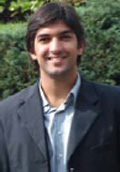 |
Eduardo C. Costa |
| Employment: Assistant Professor at the Department of Physical Education, Federal University of Rio Grande do Norte, Brazil. |
| Degree: PhD |
| Research interests: Psychophysiological responses to physical exercise and training, methods for monitoring and quantifying training loads. |
| E-mail: ecc@ufrnet.br |
| |
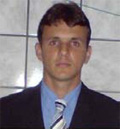 |
Caio M. A. Vieira |
| Employment: Graduate student at the Department of Physical Education, Federal University of Rio Grande do Norte, Brazil. |
| Degree: Graduate |
| Research interests: Physical conditioning, training and coaching. |
| E-mail: karlmax@hotmail.com |
| |
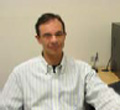 |
Alexandre Moreira |
| Employment: Associate Professor at the Department of Sport, School of Physical Education and Sport, University of São Paulo, Brazil. |
| Degree: PhD |
| Research interests: Methods for planning, monitoring, and quantifying training; stress tolerance, hormonal and mucosal immune responses, and managing fatigue and recovery in sport athletes. |
| E-mail: alemoreira@usp.br |
| |
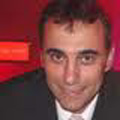 |
Carlos Ugrinowitsch |
| Employment: Associate Professor at the Department of Sport, School of Physical Education and Sport, University of São Paulo, Brazil. |
| Degree: PhD |
| Research interests: Neuromuscular adaptations to strength training, training periodization. |
| E-mail: ugrinowi@usp.br |
| |
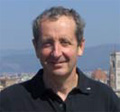 |
Carlo Castagna |
| Employment: Head of the Football Training and Biomechanics Laboratory of the Technical Department of the Italian Football Association (FIGC), Coverciano (Florence), Italy. |
| Degree: PhD |
| Research interests: Soccer field-testing and training optimization for elite and young soccer players and referees. |
| E-mail: castagnac@libero.it |
| |
 |
Marcelo S. Aoki |
| Employment: Associate Professor at the School of Arts, Sciences and Humanities, University of São Paulo, Brazil. |
| Degree: PhD |
| Research interests: Psycho-neuro-immune-endocrine responses to sports training. |
| E-mail: saldanha.caf@usp.br |
| |
|
| |
| REFERENCES |
 Achten J, Jeukendrup A E. (2003) Heart rate monitoring applications and limitations. Sports Medicine 33, 517-538. |
 Alexiou H, Coutts A J. (2008) A comparison of methods used for quantifying internal training load in women soccer players. International Journal of Sports Physiology and Performance 3, 320-330. |
 Ardigò L P. (2010) Low-cost match analysis of Italian sixth and seventh division soccer refereeing. Journal of Strength and Conditioning Research 24, 2532-2538. |
 Bangsbo J, Iaia FM., Kustrup P. (2008) The Yo-Yo intermittent recovery test: a useful tool for evaluation of physical performance in intermittent sports. Sports Medicine 38, 37-51. |
 Bangsbo J. (1994a) Energy demands in competitive soccer. Journal of Sports Sciences 12, S5-12. |
 Bangsbo J. (1994b) The physiology of soccer – with special reference to intense intermittent exercise. Acta Physiologica Scandinavica 619, 1-155. |
 Banister E.W., Green H.J., McDougal J.D., Wenger H.A. (1991) Physiological Testing of Elite Athletes. Modeling elite athletic performance. Champaign, Illinois. Human Kinetics. |
 Barbero-Álvarez JC., Bullosa BA., Nkamura FY., Adrín G, Castagna C. (2012) Physical and physiological demands of field and assistant soccer referees during America’s Cup. Journal of Strength and Conditioning Research 26, 1383-8. |
 Bland JM., Atman D G. (1986) Statistical methods for assessing agreement between two methods of clinical measurement. Lancet 1, 307-310. |
 Castagna C, , Abt G, , D'Ottavio S. (2004) Activity profile of international-level soccer referees during competitive matches. Journal of Strength and Conditioning Research 18, 486-490. |
 Castagna C, , Abt G, , D’Ottavio S. (2007) Physiological aspects of soccer refereeing performance and training. Sports Medicine 37, 625-646. |
 Castagna C, , Abt G. (2003) Intermatch variation of match activity in elite Italian soccer referees. Journal of Strength and Conditioning Research 17, 388-92. |
 Coutts AJ., Dffield R. (2010) Validity and reliability of GPS devices for measuring movement demands of team sports. Journal of Science and Medicine in Sport 13, 133-135. |
 Da Silva AI., Frnandes LC., Frnandez R. (2008) Energy expenditure and intensity of physical activity in soccer referees during match-play. Journal of Sports Science and Medicine 7, 327-334. |
 Edwards S., Edwards S. (1993) The Heart Rate Monitor Book. High performance training and racing. Sacramento, CA. Feet Fleet Press. |
 Foster C, Florhaug JA., Fanklin J, Gottschall L, Hrovatin LA., Prker S, Doleshal P, Dodge C. (2001) A new approach to monitoring exercise training. Journal of Strength and Conditioning Research 15, 109-115. |
 Helsen W, , Bultynck J B. (2004) Physical and perceptual-cognitive demands of top-class refereeing in association football. Journal of Sports Sciences 22, 179-89. |
 Hopkins WG., Mrshall SW., Btterham AM., Hnin J. (2009) Progressive statistics for studies in sports medicine and exercise science. Medicine and Science in Sports and Exercise 41, 3-13. |
 Impellizzeri F.M., Rampinini E., Coutts A.J., Sassi A., Marcora S.M. (2004) Use of RPE based training load in soccer. Medicine and Science in Sports and Exercise 36, 1042-1047. |
 Impellizzeri FM., Rmpinini E, Marcora S M. (2005) Physiological assessment of aerobic training in soccer. Journal of Sports Science 23, 583-592. |
 Kelly V.G., Cutts A. J. (2007) Planning and monitoring training loads during the competition phase in team sports. Strength and Conditioning Journal 29, 32-37. |
 Krustrup P, , Mohr M, , Steensberg A, , Bencke J, , Kjaer M, , Bangsbo J. (2006) Muscle and blood metabolites during a soccer game: implications for sprint performance. Medicine and Science in Sports and Exercise 38, 1165-1174. |
 Lucia A, , Hoyos J, , Santalla A, , Earnest C, , Chicharro J. (2003) Tour de France versus Vuelta Espana: Which is harder?. Medicine and Science in Sports and Exercise 35, 872-878. |
 Mallo J., Navarro E., Aranda J.M.G., Helsen W. F. (2009) Activity profile of top-class association football referees in relation to fitness-test performance and match standard. Journal of Sports Sciences 27, 9-17. |
 Moreira A., McGuigan M.R., Arruda A.F., Freitas C.G., Aoki M. S. (2012) Monitoring internal load parameters during simulated and official basketball matches. Journal of Strength and Conditioning Research 26, 861-866. |
 Reilly T. (1997) Energetics of high-intensity exercise (soccer) with particular reference to fatigue. Journal of Sports Sciences 15, 257-263. |
 Stølen T, , Chamari K, , Castagna C, , Wisløff U. (2005) Physiology of soccer: an update. Sports Medicine 35, 501-536. |
 Tessitore A, , Cortis C, , Meeusen R, , Capranica L. (2007) Power performance of soccer referees before, during, and after official matches. Journal of Strength and Conditioning Research 21, 1183-1187. |
 Tumilty D. (1993) Physiological characteristics of elite soccer players. Sports Medicine 16, 80-96. |
 Weston M, , Bird S, , Helsen W, , Nevill A, , Castagna C. (2006) The effect of match standard and referee experience on the objective and subjective match workload of English Premier League referees. Journal of Science and Medicine in Sport 9, 256-262. |
 Weston M, , Drust B, , Atkinson G, , Gregson W. (2011a) Variability of soccer referees’ match performances. International Journal of Sports Medicine 32, 190-194. |
 Weston M, , Drust B, , Gregson W. (2011b) Intensities of exercise during match-play in FA Premier League referees and players. Journal of Sports Sciences 29, 527-532. |
 Weston M., Castagna C., Impellizzeri F.M., Bizzini M., Williams A.M., Gregson W. (2012) Science and medicine applied to soccer refereeing: an update. Sports Medicine 42, 615-31. |
 Weston M., Castagna C., Impellizzeri F.M., Rampinini E., Abt G. (2007) Analysis of physical match performance in English Premier League soccer referees with particular reference to first half and player work rates. Journal of Science and Medicine in Sport 10, 390-397. |
 Weston M., Castagna C., Impellizzeri F.M., Rampinini E., Breivik S. (2010) Ageing and physical match performance in English Premier League soccer referees. Journal of Science and Medicine in Sport 13, 96-100. |
|
| |
|
|
|
|

